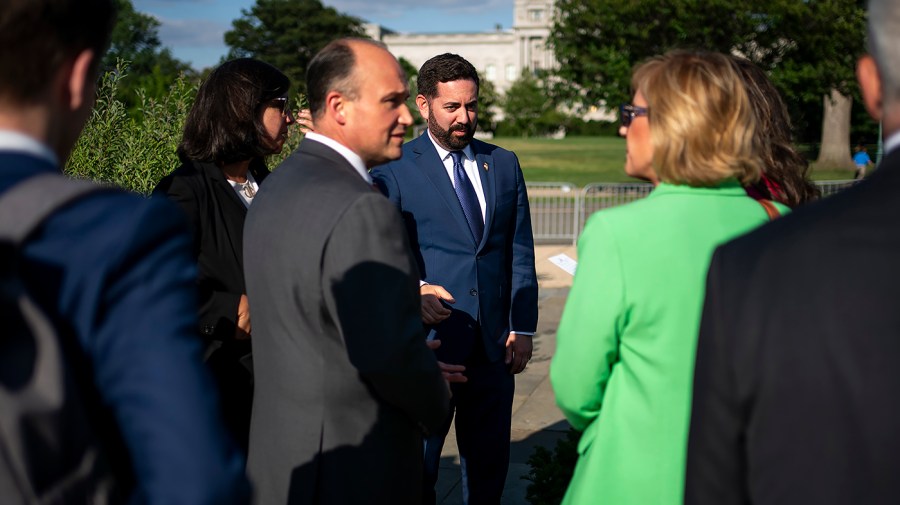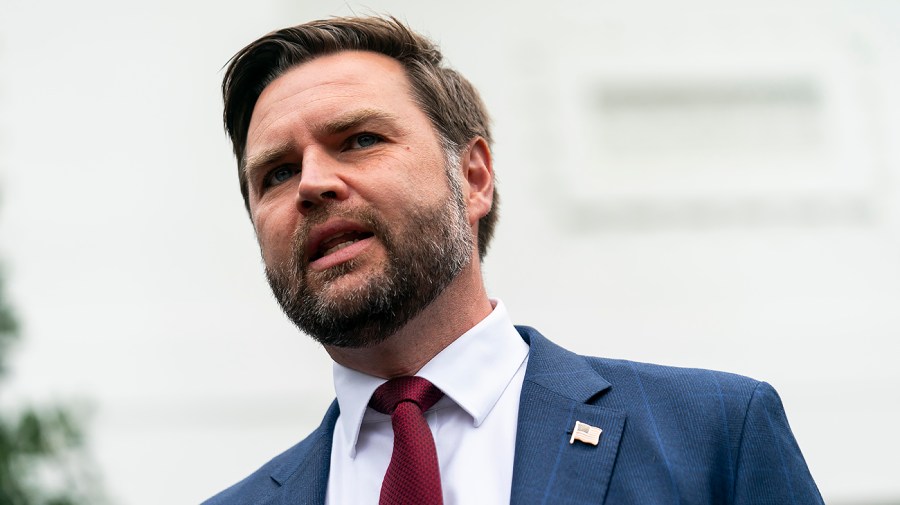Republicans focused on SALT will meet with Trump as they threaten to filibuster the bill

Republicans who have vowed to withhold support for President-elect Trump’s ambitious agenda if the cap on the state and local tax (SALT) deduction are not raised are scheduled to meet with the incoming president this weekend.
“I’ve been very clear from the beginning that I will not support a tax bill that does not raise the maximum SALT tax,” Rep. Mike Lawler (R-N.Y.) told reporters earlier in the week.
Republicans plan to advance Trump’s priorities on taxes, energy and the border through a special, party-wide “reconciliation” process that bypasses the need to get Democratic approval, but can only be used once or twice a year.
In the slim GOP majority in the House, opposition from a handful of SALT caucus members could stall the key bill.
But the push to raise the cap on the SALT tax — an expensive tax deduction popular among wealthier taxpayers in many higher-tax states — faces opposition from the other end of the ideological spectrum in the GOP, with fiscal hawks warning of the effects on… Budget.
“SALT is a factor in determining whether you can get to deficit reduction,” said Rep. Chip Roy (R-Texas), a member of the Freedom Caucus. I think we need to reduce the deficit overall. This is my priority.”
One Republican attending Saturday’s meeting told The Hill that a lot of attention will be placed on the SALT deduction cap, but blue state Republicans will look at how the total tax package will be affected and how other variables will affect blue states. An alternative minimum tax and a version of the SALT cap for businesses will also be important.
Trump, eager to see his agenda passed as quickly as possible, is meeting with House GOP members this weekend as they discuss conflicting priorities. He met with members of the Freedom Rally on Friday and will meet with leaders of other gatherings and committee heads on Sunday.
Although the SALT caucus has significant influence within the slim majority of Republicans in the House of Representatives, it is clear that they are abandoning outright repeal of the SALT cap, and are entering the meeting with a proposal to raise the tax break cap, rather than end it.
Lawler reintroduced legislation this week to increase the SALT cap to $100,000 for single filers, 10 times the current cap level of $10,000. Lawler’s bill would raise the cap to $200,000 for joint filers, eliminating what critics call the law’s “marriage penalty.”
But simply raising the cap for married couples won’t be enough on its own to garner support from SALT-focused members, the first-ranking Republican told The Hill.
Lawler told The Hill he does not expect to reach an agreement over the weekend, but believes negotiations will continue throughout the reconciliation process. He also supported Trump’s preference to move on a single reconciliation bill comprehensive of the GOP agenda rather than splitting it into two different bills, a strategy sought by Senate leadership and the Freedom Caucus..
“Look, I don’t expect it to be resolved at the meeting. Obviously we’re working through the reconciliation process. Taxes, borders, energy will all be part of the mix… but the goal certainly is to go in as a united front, we’re in these states, these areas that are most severely impacted The maximum SALT tax, and has a “discussion with the president,” he said.
SALT Caucus member Nick Lalotta (RN.Y.) said the cap was brought up during a House GOP planning meeting on reconciliation last weekend, but no numbers or details were discussed — just that it was a priority in the House and on the House floor. . The next administration.
Lalota said he did not care whether reconciliation happened in one bill or two bills.
“The number of bills is not on my priority list. Getting a reasonable increase in SALT discount is my top priority, so when I can achieve my top priority, I won’t be clinging to other things that are less important or not important to me.”,He said.
In addition to Lawler and Lolotta, Reps. Yong Kim (R-CA), Tom Kean Jr. (R-NC), Andrew Garbarino (R-ND), and Nicole Malliotakis (R-NY) are scheduled to take office. He attended the blue-state Republican rally at Trump’s Mar-a-Lago residence in Florida on Saturday.
Other proposals to change the SALT cap include a more modest proposal to double it to $20,000 from $10,000.
Increasing the cap to just $15,000 for individuals and $30,000 for joint applicants could increase the deficit by as much as $450 billion, the Committee for a Responsible Federal Budget, a Washington think tank, estimated this week.
SALT Republicans are preparing to hear good news from Trump on their top priority. On the campaign trail in September, Trump suggested he would seek to repeal the SALT cap entirely, vowing on social media to “restore SALT” and work with Democrats in the process.
“I will turn it around, take back the salt, cut taxes, and so much more. I will work with the Democratic Governor and Mayor, and make sure the funding is in place,” Trump wrote on social media.
However, calls to raise the SALT cap will complicate calls from the party’s fiscal hawks to make the bill’s massive deficit neutral, or even deficit-reducing.
Republicans are already aiming for $2.5 trillion in cuts to appease fiscal hawks who rejected raising the debt limit as part of the bill. The loss of revenue by raising the SALT cap means Republicans will have to find more cuts elsewhere to achieve that goal.
“The SALT deduction cap could cost up to $1 trillion. “You know, it has to be taken into account and balanced with more cost savings and more,” said Rep. Ben Cline (R-Va.), vice chairman of the conservative Republican Study Committee and a member of the committee. Of improvements to the bureaucracy.” From the Freedom Caucus in the House of Representatives.
The Committee for a Responsible Federal Budget estimated in 2021 that eliminating the cap would add $900 billion to the deficit.
If Republicans do nothing, the cap will expire later this year, and the deduction will be reset to be unlimited, increasing the deficit — and financial markets have already shown signs of stress this week amid uncertainty over federal deficit levels.
Investors sold US bonds and the yield on 10-year bonds jumped mid-week above 4.7 percent, the highest level since April, amid possible concerns about rising debt levels.
The upward trend in long-term yields comes even as the Federal Reserve cuts interest rates to stimulate economic growth, cutting a full point since September and expecting more cuts this year. Torsten Slok, chief economist at Apollo, described the diverging paths between short-term interest rates and bond yields as “highly unusual.”
This may be because investors are looking for greater returns on their investments in light of increasing uncertainty about federal debt levels.
Spreads may also reflect a slowdown in international demand for U.S. Treasuries or a belief that the Fed’s recent cuts were not justified, Slok speculated in a commentary.
“I don’t think entitlement reform is on the agenda,” investor Axel Merck told The Hill. “Those who are concerned about financial sustainability are as concerned today as they were yesterday.”




Post Comment